HMS Victory
Perhaps one of the most well-known tall-ships of all-time, HMS Victory was the flagship of Admiral Horatio Nelson at the Battle of Trafalgar in 1805. Victory is the world's oldest naval ship still in commission, with 243 years of service as of 2021. Today, her role is as a museum ship; she is dry-docked at Portsmouth, England.
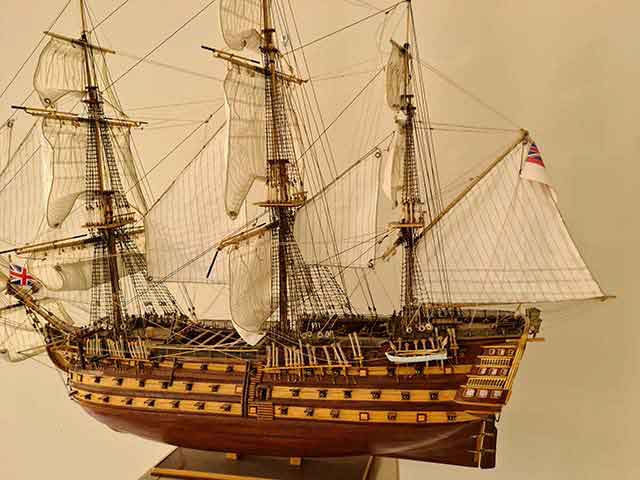
Victory was a 104-gun, first-rate Ship-of-the-Line - meaning that, along with other vessels of similar design and construction, she was very often at the vanguard of the many battles in which she took part.
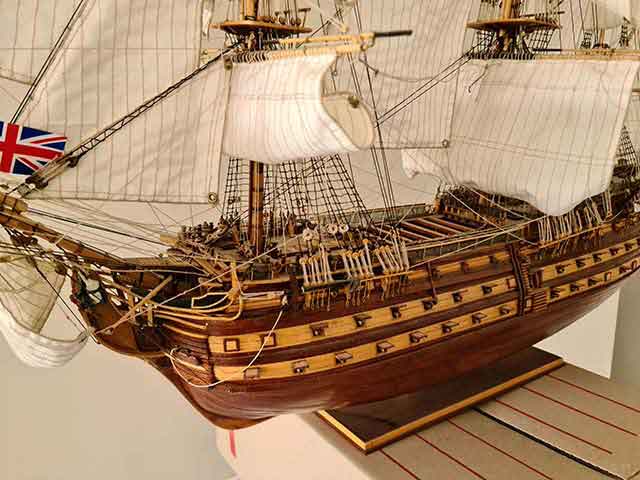
The exact number of guns carried by Victory varied over the course of her active years, but typically fell between 96 and 120, spread over her four gun-decks.
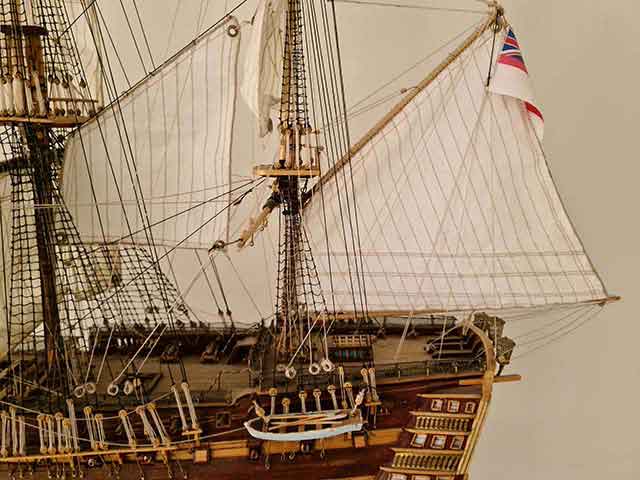
These guns ranged from 42-pounders - meaning they fired 42-pound (19kg) cannon-balls - on the lower
deck, to 24-pounders on the middle deck and a mix of 24- and 12-pounders on the upper-deck, arrayed along the
quarter-deck and forecastle.
At one point, she sported twin 68-pound (31kg) heavy cannons.
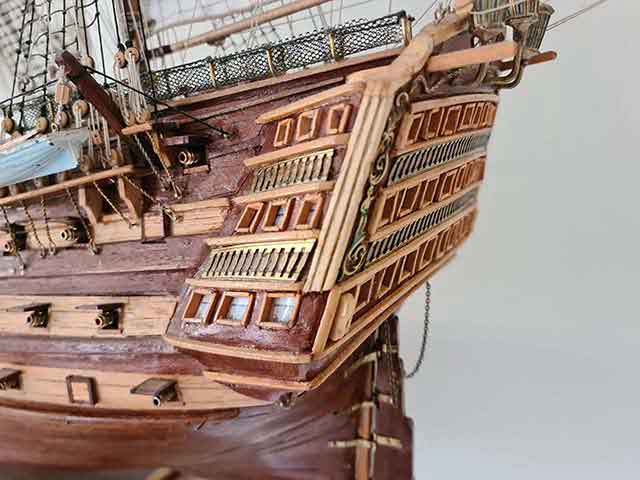
HMS Victory was involved in numerous incidents over the course of her career, fighting mostly against
the French and Spanish - England's historic enemies of the day.
During the American Revolutionary War, France was allied with the American colonies, and so Victory saw action
off the north-western coast of France in the first and second Battles of Ushant; she also aided in re-supplying British
forces against Spain during the Siege of Gibraltar in 1782.
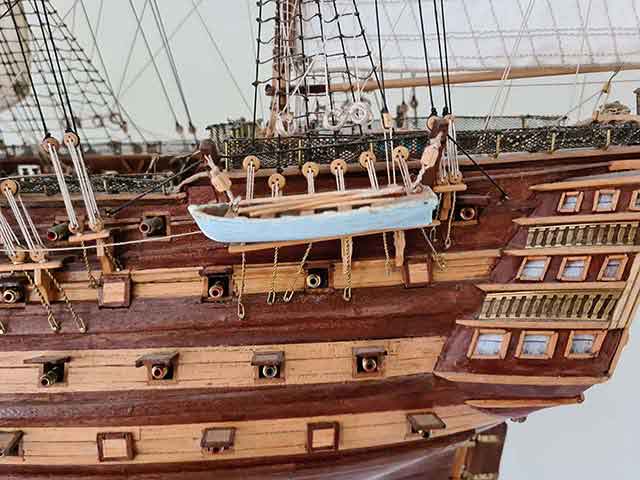
Spear-heading the Battle of Cape St Vincent, Victory - then commanded by Capt Robert Calder under Admiral Sir John Jervis - took a larger Spanish fleet by surprise, completely routing them and capturing four ships, for the loss of just a single British serviceman.
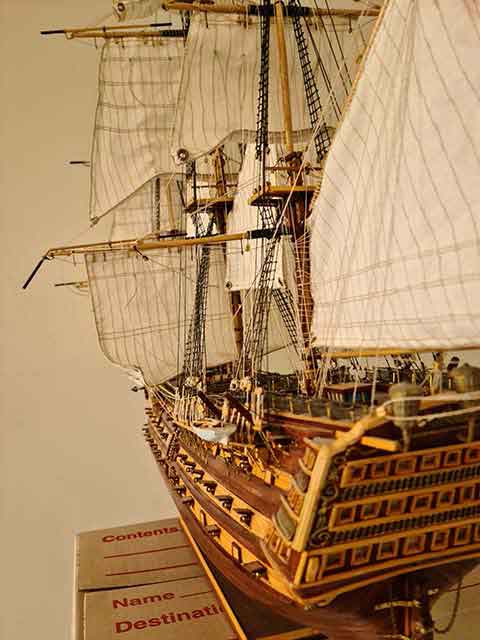
Victory was badly damaged during this battle and on return to England was removed from active service, and saw time as a hospital ship. Out of necessity, she was reconditioned and refitted some four years later, before being returned to duty – just as Napoleon Bonaparte was making a rise on the European landscape.
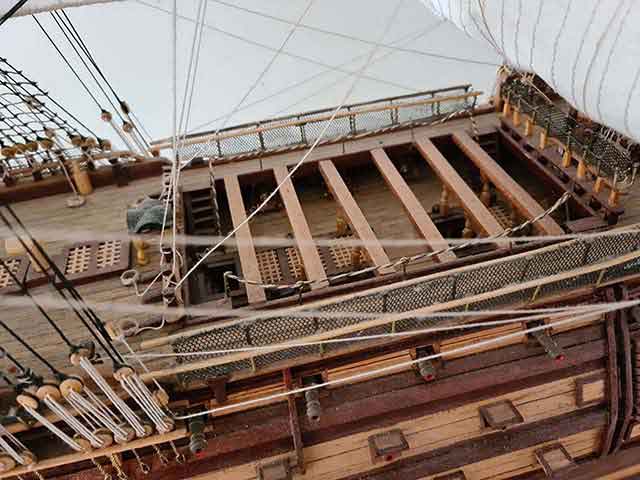
Then a vice-admiral, Horatio Nelson assumed command of Victory in 1803. Over the course of the next year, Britain attempted to follow and harass the French fleets wherever they could be found throughout the Mediterranean, and across to the West Indies.
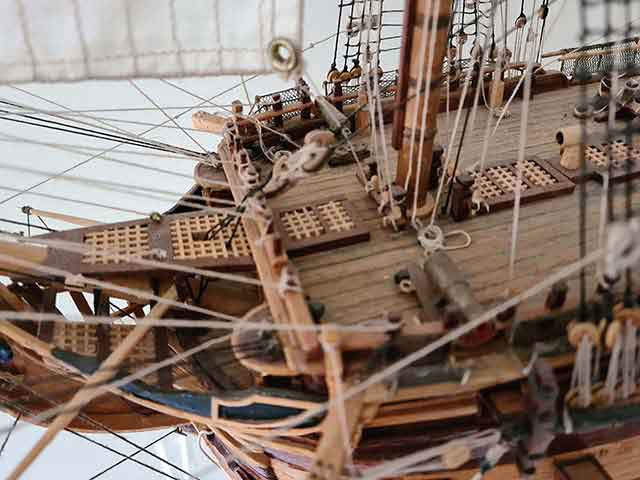
In 1804, Napolean ordered his vice-Admiral, Pierre-Charles Villeneuve, to escape a British blockade and attack the English fleet in preparation for the planned invasion of Britain.
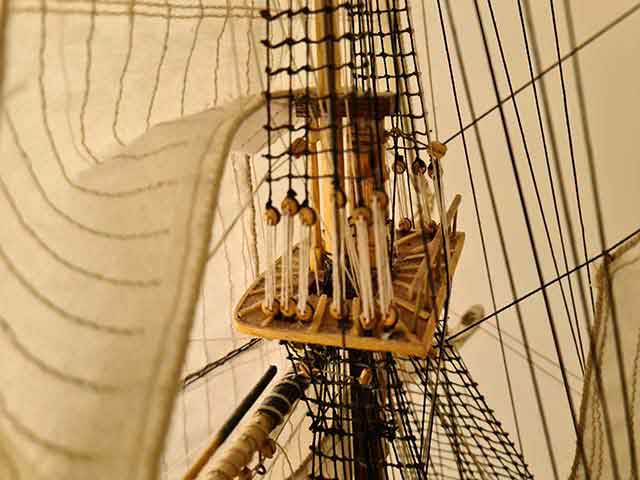
On the morning of October 21, 1805, the British fleet - who had been tracking the French throughout the previous night - turned to intercept the enemy fleet. A six-hour chase and fight ensued, before Victory was able to break the French line.
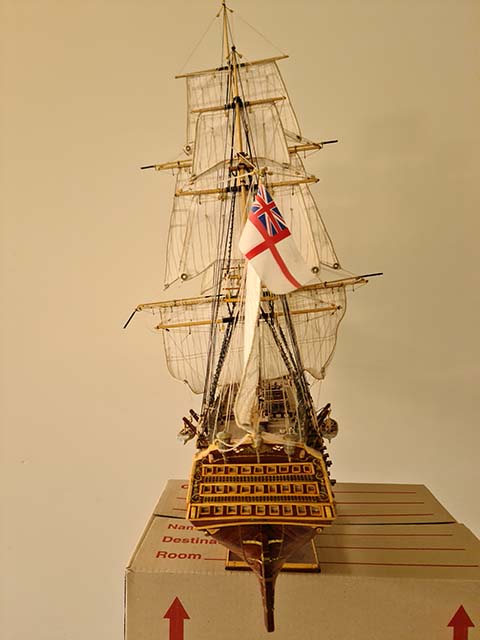
It was during this battle that Nelson was mortally wounded. He died some hours later, but by this time the British had successfully routed the combined French and Spanish fleet.
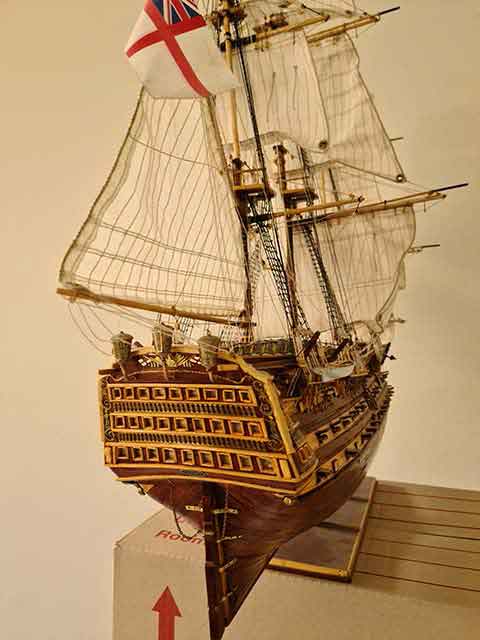
This was the first wooden ship kit at which CaptainSteve didst try-eth his hand; it was built from a kit produced by Constructo, and took almost five years to complete, being finished around 2008.
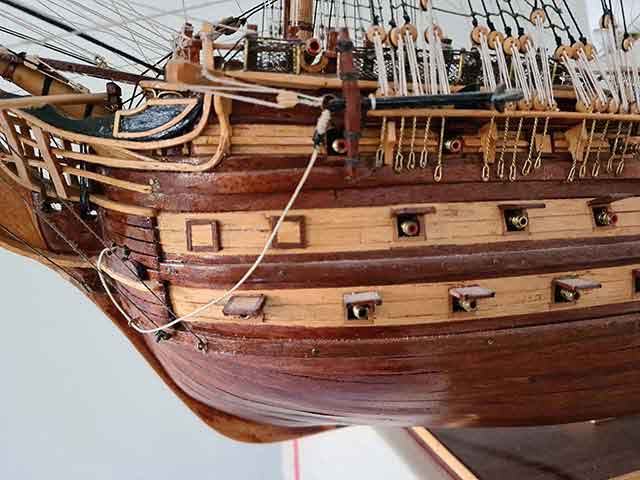
This build proved to be quite a challenge ... and some later, CaptainSteve was to learn that mayhaps he should
have chosen an easier model to attempt for his first wooden ship kit.
Nonetheless, he hopes that you will agree that his HMS Victory turned out quite decent.
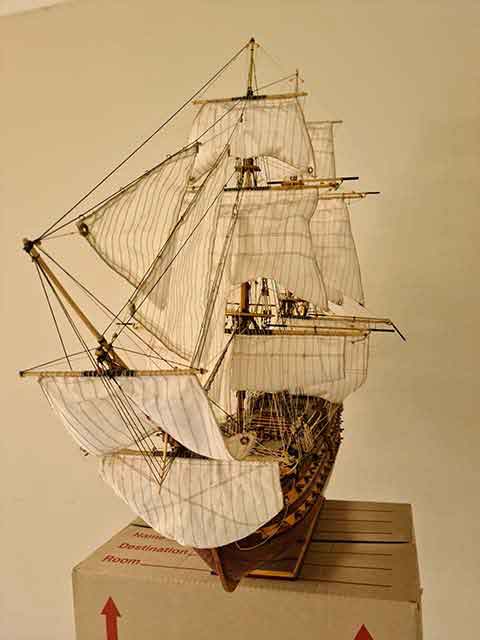
Today she is docked in her shipyard, located on the dining-room side-board at the home of my brother, CaptainPete, protecting all who dine therein from the dastardly French and nasty Spaniards.
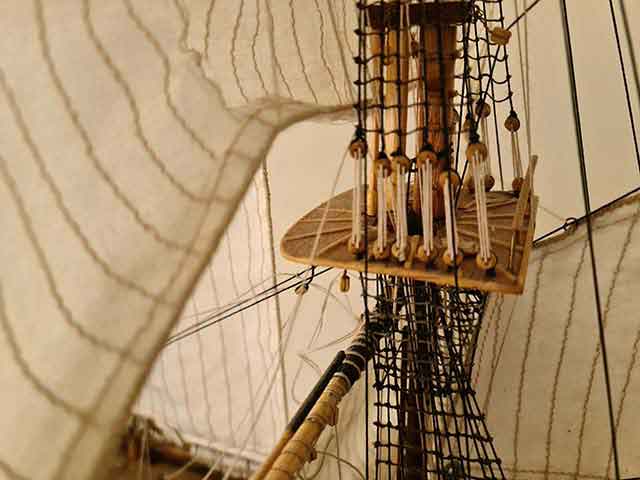
© Pictures CaptainPete 2021